Ken Myers Change of ADDERESS!
Ken Myers
1911 Bradshaw Ct.
Walled Lake, MI 48390
Phone: 248-669-8124
Ampeer Paper Subscriber Reminder
When subscribing to or renewing the paper version of the Ampeer, please make the check payable to Ken Myers. We do not have a DBA for the Ampeer or EFO. Thanks, Ken
October 2007 Ampeer Correction
In my article "More On Selecting a Brushless Outrunner for a Sport or Sport Scale Project Using M1 Cells", Table 2 on page 2 showed suggested wing areas. Unfortunately I typed sq.ft instead of sq.in. It is sq.in., NOT sq.ft. The online version was changed, but those with the paper version will need to make that correction. Sorry, Ken
Return to "What's In This Issue"
One Way of Selecting a Brushless Outrunner Electric Motor for a Radio Controlled (RC or R/C) Sport Plane or Sport Scale Plane Using M1 (A123 Systems NanophospateTM lithium ion) Cells
I have taken much of the information from the September and October Ampeers and created a single article. The article is online.
The name pretty much describes what the article is about.
Return to "What's In This Issue"
Fly in Your Living Room
With the snow and cold of winter approaching Michigan, you might want to look into the Plantraco Living Room Flyers (www.microflight.com) to get that flying fix.
Return to "What's In This Issue"
Keep Those Batteries Warm
It's that time of year again to keep those lithium polymer and lithium ion batteries warm when flying outside. I've mentioned that I use a "rice bag" to keep them warm on the way to the field and until I use them for the first time. It is just a kitchen towel sewn into a bag shape with Velcro at the "top" and filled with rice. I heat this size in the microwave for about 3 minutes. Great for aches and pains and keeping batteries warm.
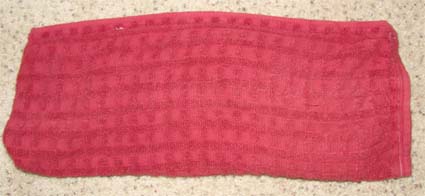
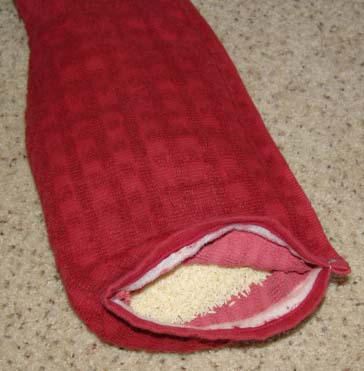 Return to "What's In This Issue"
Return to "What's In This Issue"
HXT 42-60/06 500kv Brushless Outrunner from Untied Hobbies/Hobby City - A Review
Manufacturer's designation: EMP C4260/06-0500
A Review by Ken Myers

On August 31, 2007 I ordered two HXT 42-60/06 500kv brushless outrunners from Untied Hobbies (aka Hobby City) (www.unitedhobbies.com) in Hong Kong. They were priced at $29.78USD each and shipping was $14.99USD for a total of $74.55USD or $37.28USD each. They arrived on Friday, September 7, 2007.
On the Untied Hobbies Web site, I noticed that all of the motors with the three-letter prefix HXT did not look to be of the same construction. I do not know what HXT means, but they do not all seem to be from one manufacturer.
On one end of the clear plastic box that the motor came in, I found three letters "XYH". All of the writing on the clear plastic box and one side of the instruction sheet had a "sort of" English on them.
The other end had a sticker that read, "Kv / 500 Rpm/V"
Box Side A: "Out runner brushless motor for aeromodelling OK-C4260 (3530)" and then some certification codes.
Box Side B: "Specification: Shape Size of Motor: ø42.5X60Xø5mm Weight: About 265g"
Box Side C: "Switch Your Look - It's Easy!"
Box Side D: "Note: 1 Do not put it with metals, in order to avoid damaging motor. 2 Please carefully read the instructions before using it."
At the top of the instruction sheet it says, "Ok-4260 Out Runner Brushless Motor Instruction"
Below the illustrations of the motor and wiring diagram on the instruction sheet it says, "XYH brushless motors ..."
I did an Internet search and found that XYH is the manufacturer and the letters refer to Xingyaohua in the company name ShenZhen Xingyaohua Industrial Co., Ltd. located in Shenzhen, China. (www.xyhmotor.com/en/index.asp)
The manufacturer calls their line of motors "EMP" which is trademarked with no explanation of the three letters. They offer the "C" series outrunner, "B" series inrunner, "E" series helicopter, and "A" series for cars. I could find no reference to the A series on the Web site. I also noted in the menu on the left of the Web page that they have a CDROM series.
They explain their naming convention on the index page of the site. My two identical motors are the EMP C4260/06-0500. (www.xyhmotor.com/en/Emp_ProductShow.asp?ArticleID=248)
C - outrunner
42 - approximate outside diameter in mm
60 - approximate motor length not including the shaft in mm
06 - number of turns 6
0500 - 500Kv
According to the above Web page, here are the specifications not mentioned:
Shaft: ø5mm
Weight: 280g (instruction sheet says 265g)
Power: 900 watts in
Resistance: 23 milliohms
Idle current: 4.3 amps (but gives no voltage - see my no load tests for my data)
Recommended ESC: 45A (instruction sheet says 70A)
Nickel cells: 9 - 21 (instruction sheet says 6v-18v)
Li-Po cells: 3 - 7 (instruction sheet says LiPoX3 and recommends a 12X8 prop)
The details and the photos match what United Hobbies is calling the HXT 42-60/06 500kv Brushless Outrunner. (www.unitedhobbies.com/UNITEDHOBBIES/store/uh_viewItem.asp?idProduct=5454)
My Data and Motor Tests
Motor #1, weight as arrived with 4mm connectors: 273.25g/9.6 oz.
Motor #2, weight as arrived with 4mm connectors: 274.00g/9.7 oz.
I do not use 4mm connectors, so I removed them. The original motor lead length, from where it exited the motor into the cup on the male 4mm connector, was about 60mm. The wire itself might be 14-gauge, but it is most likely smaller, and is covered by a very "rubbery" insulation. The solder from the original connectors had wicked up the wire about 15mm towards the motor. After removing the connectors from the motors' leads, the motors with lead wires weighed:
Motor #1: 263.25g/9.3 oz. /Motor #2: 264.15g/9.3 oz.
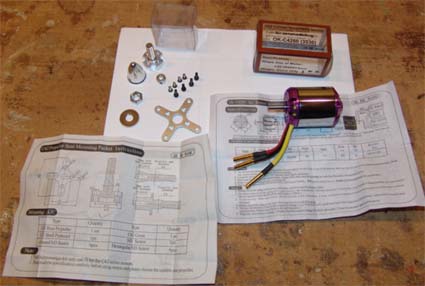
Normally I crimp to attach Anderson Power Pole (APP aka Sermos) connectors, but since the wire was already saturated with solder, I elected to solder the connectors.
Once the APP connectors were added:
Motor #1: 268.60g/9.5 oz./Motor #2: 269.30g/9.5 oz.
Motor dimensions:
Outside Diameter: 42.418mm
Outside Length: 60mm
Shaft dimensions:
Diameter: 5mm
Length including shaft: ~80mm
| Prop Adpt. #1 | Prop Adapt. #2 |
| &quuot;+" mount: 6.65g | "+" mount: 7.65g |
| Shaft collet: 1.45g | Shaft collet: 1.40g |
| 4 Hex M3 screws: 3.45g | 4 Hex M3 screws: 3.45g |
| 4 crossed M3 screws: 1.65g | 4 crossed M3 screws: 1.70g |
| Prop adapter: 9.4g | Prop adapter: 9.2g |
| Spinner nut: 8.9g | Spinner nut: 8.9g |
| Prop Nut: 4.85g | Prop Nut: 4.80g |
| Prop washer: 2.15g | Prop washer: 2.15g |
| Total: 38.5g | Total: 39.0g |
| Grand total: 301.75g | Grand total: 303.15g |
Next I used a drill press to spin the motors at 1560 RPM and measured the AC volts with my Radio Shack multimeter #20-168A. Several sets of data were collected until I settled on these values as repeatable.
Motor #1: 2.07v, 2.06v, 2.08v
Motor #2: 2.07v, 2.09v, 2.085v
The mathematical average Kv for Motor #1 is 561 RPM/v and average for Motor #2 is 558 RPM/V. The Kv appears to be 560 RPM/v, not 500 as stated by the manufacturer. The mathematical average Kt for Motor #1 is 2.41 in. oz/amp and for Motor #2 is 2.42 in. oz./amp.
Before setting up the motors for bench testing, I disassembled Motor #1 to measure the stator and take photos. I did not remove the shaft from the magnet bell, as it is a tight press fit with a single setscrew holding it in place. I did remove the setscrew to tap the shaft through just a little to make reassembling the motor with the circlip and two washers a bit easier. I used thread lock on the setscrew when I reassembled the motor. I drill press checked Motor #1 again to verify that I had reassembled it correctly.

Stator dimensions:
Diameter: 35.306mm
Length: 30.0mm
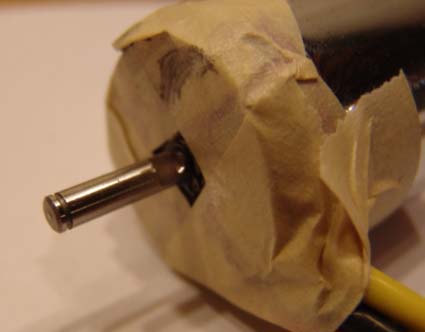
There is no "groove" in the shaft to secure the setscrew of the safety collet when using the supplied prop adapter. At first I put only a small "flat" on the shaft using my Dremel rotary tool and grinding disk. When I affixed the "+" mount to the motor, the motor would not spin freely by hand. The setscrew in the safety collet was rubbing on the hole in the mount where the shaft passes through. I then ground a grove into the shaft so that the setscrew, when tightened, was below the outside of the safety collet.

220-grit sandpaper was attached to the face of the prop adapter to aid in prop tightening without having to "physically hold" the motor. There is cross-hatching cut into the face of the prop adapter and one side of the prop washer, but they do not seem to work.
When I went to mount the "+" mount to my motor test stand, it didn't match up to any of my preexisting holes. (My bench test mount is beginning to look like a shotgun blasted it!)
A BP Hobbies BP 70A ESC was used for the testing. It was set up as follows.
Cell Type: NiMh/NiCD Auto Cell count
Throttle Setting: Auto Throttle Range
Brake Setting: No Brake
Direction and Cutoff Type: Clockwise Rotation
Timing Mode Setting: 1-deg for the first tests on each motor, 15-deg for the second
Pulse Width Modulation (PWM) Setting: 8Khz
At each timing setting, the no load tests were completed first. A strip of white paper was affixed to the rotating bell with spray adhesive on the paper only and a strip of masking tape was applied over the joint. A black magic marker was used to put a single stripe on the rotating bell to measure the RPM as the Hyperion Emeter has the ability to tach a single blade.
As always, I capture five readings and then average them to get my data to enter into the Drive Calculator (DC) computer program available FREE at www.drivecalc.de.
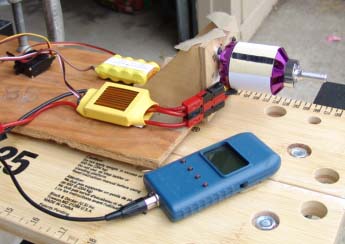
I measured the no load characteristics twice. Once using a 10-cell RC-1700 NiCad Pack and then again using a Skyshark 4S1P 4000mAh Li-Po. I ran each motor being tested with a different pack before the readings were taken, so that the motor was "warm" before the readings were taken.
No Load Results:
Motor #1
10-cell NiCad: 1-deg 3.46 amps, 13.074v, 6984 RPM
4S Li-Po: 1-deg 3.776 amps, 16.02v, 8640 RPM
10-cell NiCad: 15-deg 3.264 amps, 12.742v, 7020 RPM
4S Li-Po: 15-deg 3.718 amps, 15.998v, 8808 RPM
Motor #2
10-cell NiCad 1-deg 2.904 amps, 12.864v, 6948 RPM
4S Li-Po: 1-deg 3.268 amps, 16.18v, 8736 RPM
10-cell NiCad: 15-deg 3.118 amps, 13.132v, 7236 RPM
4S Li-Po: 15-deg 3.514 amps, 16.208v, 8916 RPM
How XYH derived 4.3 as the no load amp draw, I am not sure.
The Props
APC 14x8.5E, 32.90g, purchased March 2006, listed in DC as 14x8.5 APC E Wt. 33g
APC 13x9 Pattern, 62.50g, purchased unknown, listed in DC as 13x9 APC Pattern 62.5g
APC 13x8E, 27.75g, purchased June 2006, listed in DC as 13x8 APC E
APC 12x10E, 22.8g, purchased sometime in 2005, listed in DC as 12x10 APC E Wt. 23g
As I have noted before, APC changed the design of the E prop series a few years ago. There was not a 14x8.5E or 13x9 Pattern in DC, so I added them. My particular 12x10E does not match the prop power factors used in DC, so I've added my prop power factors to the DC prop list.
Battery
The same 6S1P M1 (A123 Systems) battery from BigERC.com was used to collect all prop data. Five data points were collected and recorded for each of the four props before the battery was recharged. The numbers presented here do NOT reflect the "Beginning or Top" of the pack numbers. Actually, all the 12x10E numbers, which were taken last, were about 1/2 way through the battery capacity, based on the amount of mAh returned when recharged.
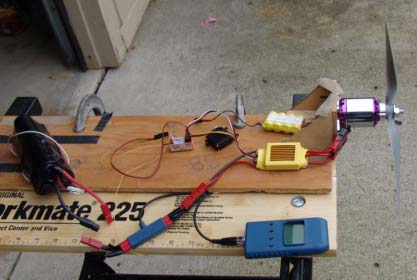 Collected Data:
Collected Data:
The elevation of Walled Lake, MI, USA is about 287m. All of the tests were done outside on a very cloudy day.
System power out is difficult to determine without using a dynamometer. While I have a spreadsheet that uses two different mathematical models to estimate system power out, for simplicity, I have chosen to present the numbers from Drive Calculator in the data below.
Motor #1 1-deg timing, Temp: ~15 deg. C, Pressure: 29.81" Ð rising, Humidity 73%
APC 14x8.5E, 16.576v, 35.636 amps, 7176 RPM, 590.8859 Watts in, 406 Watts out, DC Sys. Eff. 71.3%
APC 13x9 Pattern, 16.976v, 34.186 amps, 7434 RPM, 580.4996 Watts in, 400 Watts out, DC Sys. Eff. 71.7%
APC 13x8E, 17.056v, 31.382 amps, 7608 RPM, 535.45516 Watts in, 371 Watts out, DC Sys. Eff. 72.0%
APC 12x10E, 16.9v, 31.58 amps, 7512 RPM, 533.8568 Watts in, 369 Watts out, DC Sys. Eff. 71.9%
Motor #1 15-deg timing, Temp: ~18 deg. C, Pressure: 29.80" Ð rising, Humidity 55%
APC 14x8.5E, 16.665v, 36.625 amps, 7267.5 RPM, 610.50355 watts in, 424 Watts out, DC Sys. Eff. 70.1%
APC 13x9 Pattern, 16.94v, 34.966 amps, 7488 RPM, 592.42464 watts in, 414 watts out, DC Sys. Eff. 70.8%
APC 13x8E, 17.076v, 32.522 amps, 7674 RPM, 555.51192 watts in, 391 watts out, DC Sys. Eff. 71.1%
APC 12x10E, 16.808v, 32.58 amps, 7554 RPM, 547.779 watts in, 386 watts out, DC Sys. Eff. 71.1%
Motor #2 1-deg timing, Temp: ~19 deg. C, Pressure: 29.72" Ð steady, Humidity 48%
APC 14x8.5E, 16.988v, 37.152 amps, 7392 RPM, 631.26346 watts in, 447 Watts out, Sys. Eff. 72.6%
APC 13x9 Pattern, 17.194v, 34.664 amps, 7602 RPM, 596.11986 watts in, 425 watts out, Sys. Eff. 73.1%
APC 13x8E, 17.298v, 32.174 amps, 7758 RPM, 556.63566 watts in, 399 watts out, Sys. Eff. 73.5%
APC 12x10E, 17.084v, 32.3 amps, 7656 RPM, 551.94206 watts in, 395 Watts out, Sys. Eff. 73.4%
Motor #2 15-deg timing, Temp: ~20 deg. C, Pressure: 29.72" Ð falling, Humidity 45%
APC 14x8.5E, 16.788v, 37.4 amps, 7398 RPM, 628.1104 watts in, 448 watts out, Sys. Eff. 71.9%
APC 13x9 Pattern, 16.97v, 35.34 amps, 7596 RPM, 599.88556 watts in, 431 Watts out, Sys. Eff. 72.2%
APC 13x8E, 17.134v, 32.862 amps, 7794 RPM, 563.16156 watts in, 407 Watts out, Sys. Eff. 72.6%
APC 12x10E, 17.00v, 33.464 amps, 7704 RPM, 569.03998 watts in, 411 Watts out, Sys. Eff. 72.5%
I verified all the data to see that it compared well with the data I had input into DC and found that it was quite accurate.
Next I created an "average" motor using the data. The "average" data was uploaded to DC. That is the reason I listed the motor data for each example here.
I also uploaded the motor to DC with the manufacturer's naming convention, as it is available under that name as well.
DC now contains the data to make some reasonably accurate predictions using various battery combinations and props with this motor.
Top of the Pack Numbers
The following data was collected with a fully charged pack using the Hyperion Emeter.
The numbers that are entered after "DC" are the Drive Calculator generated numbers for comparison.
Measured: Motor #1 APC 13x9 pattern, 17.34v, 35.9 amps, 7590 RPM, 623 watts in
DC: Motor #1 APC 13x9 pattern, 17.34v, 34.3 amps, 7601 RPM, 595 watts in
Measured Motor #2 APC 12.5x10 pattern, 17.98v, 36.0 amps, 7950 RPM, 647 watts in
DC: Motor #2 APC 12.5x10 pattern, 17.98v, 34.5amps, 7966 RPM, 621 watts in
Flying the Motor
The first flight test using Motor #1 was on Saturday, October 6. The motor was mounted to the Flite 40. The cowl was modified to become the front of the fuselage and epoxied onto the airframe. The original 1/8" balsa cowl front was replaced with 1/8" plywood "front firewall", so that the motor could be mounted directly to the new front plate. In this configuration, the prop adapter that came with the motor was not used. A BP Hobbies' F459 Aluminum/Steel Prop Adapter Union Type - 5.0mm was used to mount the APC 13x9 pattern prop.
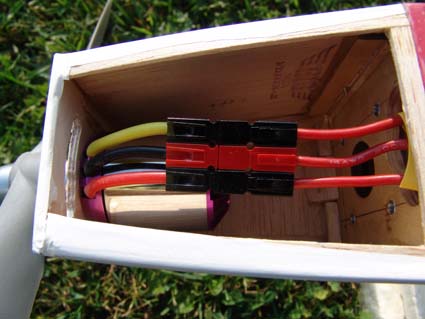
The Flite 40 took off easily from the grass at only partial throttle. The first few minutes were spent resetting the trims of the plane. (The plane had a problem not related to the motor and was out of trim quite a bit.) The throttle was being used to fly the plane at various speeds while re-trimming. About three minutes into the flight there was a catastrophic motor mount failure. When the 10 ounces of motor and prop parted company with the plane, the CG changed drastically. I was able to land the plane almost on the runway with very little damage to the airframe. The 1/8" plywood firewall and part of the motor were all that were found.
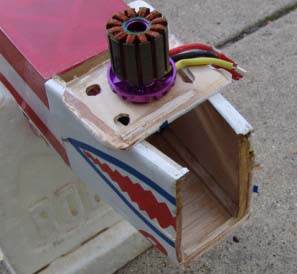
The mounted failed because the 1/8" plywood could not handle the over 600 watts in and the plywood laminate separated leaving the epoxy glue behind. Lesson learned, use a metal mount for this type of mounting with this much power!
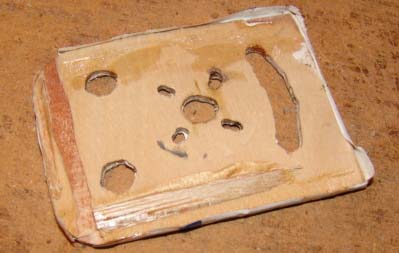
Motor #2 was mounted to the firewall using the "+" mount.

Sunday, October 14 was a total success with Motor #2. An APC 12.5x10 pattern prop was used for three test flights. The first flight was a 3-minute trimming flight. During the trimming flight, it was apparent that even though the power system using the HXT 42-60/06 was not as efficient as the original TowerPro 3520-7 using an APC 12x7 pattern prop as reported last month, it was flying "better." The speed was up and so were the vertical climbs and loop size. The second flight was timed for 5 minutes. During that flight I did as much as I could without holding back. The 6S M1 pack was then filled at the field and it took about 1700mAh. The timer on my Hitec Eclipse 7 was reset for 6 minutes. Once again the third flight was pretty aggressive and included a landing and taxi back to the pilot.
When I recharged the pack a few days later, it took 1831mAh. It looks like 7 minute flights should be possible.
When the cowl was turned back into a cowl and recovered, the shark's teeth had to go. A friend of mine, Jim Cross, said it is unlucky to have them on this type of plane. Man, was he right! :-)
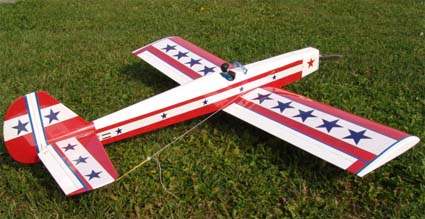
Conclusions and Observations:
The motor with leads has a weight of about 264g, not the 280g listed on the United Hobbies/Hobby City and XYH Web sites. It does have about that weight if the 4mm connectors are included. While the manufacturer suggests 900 watts in as the maximum, I personally would not use this motor at more than 800 watts in. My preferred use will be in the 500 watts in to 650 watts in range.
The motor has quite a high Io. It appears not to be very efficient, but efficient enough to be usable. Both my calculations and the DC calculations indicate that the best system efficiency, when using this motor, is below 75% and even drops below 70% at times. The Rm appears to be quite high as well, since the motor got quite warm after only a few seconds of motor run time with the prop on during the static testing. The user is strongly advised to follow the advice on the instruction sheet, "Motors must be using with good ventilation, which is easy to emanate heat."
The prop shaft has to have a "groove" added to secure the safety collet.
The equivalent AXI designation would be a 3530/06, if it existed.
The mathematical measured Kv appears to be about 560 RPM/V. At 1-deg timing advance it has an apparent Kv of 560 RPM/V according to the computed Kt in DC. With 15 degrees of timing advance the apparent Kv is 565 RPM/V based on the DC computed Kt. As far as I am concerned, the Kv is 560, not the stated 500.
There was a very strange note in the instructions. It says, "Battery/Prop LiPoX3/12x8". I used DC and tried a good 3S Li-Po pack to get maximum voltage and with all of the 12x8 props listed, the amp draw was between 13 and 16 amps. In my opinion, that is way under utilizing this motor.
DC possible uses for this motor in sport and sport scale plane with 1-deg ESC timing and M1 Cells
Note: For specific weight and wing area recommendations see the tables at www.theampeer.org/M1-outrunners/M1-outrunners.htm
5S APC 13x10 sport, 14.66v, 34.1 amps, 6408 RPM, eff. 72%, (pitch speed 61 mph)
5S APC 14x10E, 14.50v, 37.1 amps, 6216 RPM, eff. 72%, (pitch speed 59 mph)
6S APC 12x10E, 17.61v, 33.8 amps, 7788 RPM, eff. 73%, (pitch speed 74 mph)
6S APC 12.5x10 pattern, 17.63v, 33.4 amps, 7813 RPM, eff. 72.5%, (pitch speed 74 mph)
6S APC 13x8 sport, 17.61v, 33.9 amps, 7781 RPM, eff. 73%, (pitch speed 59 mph)
6S APC 13x9 pattern, 17.54v, 34.9 amps, 7699 RPM, eff. 72%, (pitch speed 66 mph)
6S APC 14x7E, 17.44v, 36.4 amps, 7587 RPM, eff. 72%, (pitch speed 50 mph)
6S APC 14x8.5E, 17.36v, 37.6 amps, 7499 RPM, eff. 72%, (pitch speed 60 mph)
7S APC 13x6.5E, 20.32v, 36.8 amps, 8881 RPM, eff. 72%, (pitch speed 55 mph)
7S APC 13x7 sport, 20.30v, 37.1 amps, 8860 RPM, eff. 72%, (pitch speed 59 mph)
My Final Thoughts
I purchased this motor so that I could use a larger diameter prop on the Flite 40 from Dymond RC, but I wanted to keep the static wide open throttle (WOT) amps to about 35.
It appears to have been a relatively good choice. Even though I'm losing about 50 watts out compared to the TowerPro 3520-7 using an APC 12x7 pattern prop, the larger diameter props (12.5x10 & 13x9), with there better efficiency appear to have more than made up for the added electrical and mechanical losses.
Return to "What's In This Issue"
Sig "Somethin' Extra" Conversion
From Robert Fishwick Vancouver Canada rmfish@telus.net
(In the September 2007 Ampeer I discussed planes that might make a good 5S M1 cell type. Robert sent along the following. While he's not using M1 cells, it does relate reasonably well. KM)
Hi Ken,
What a coincidence, I was given a "Somthin' Extra" by one of our members who flew it glow powered, to see what I could do converting it to Electric Power. The maiden flight was at Chilliwack. After the maiden I made some minor changes such as prop size and servo throws.
I think I have a winner. It has terrific vertical, super aerobatics, very good duration, (over 8 minutes of aerobatics) and only put 2018mAh back into the 3700 4-cell pack).
Specifications:
Motor: AXI 4120/14
Prop: APC 14x7E
Power: 4 Eflight EVO 20 Li-Po cells
Controller: Castle Creations Phoenix 60
All up flying weight: 5 Pounds 14 oz. (94 oz.)
Full throttle power on this baby is awesome. It has no difficulty taking off on two-inch grass and is in the air in less than thirty feet.
I am sure that if you build one from scratch, weight savings by the ton could be made. I removed the covering from the right wing, as the old covering had a lot of holes and slits. The framework under the covering is overbuilding personified, typical glow overkill.
To get some motor/battery/prop measurements, Brad and I got together at the flying field last night,
After the tests, without recharging the 4 cell Li-Po, I went ahead and flew for about 6.5-7 minutes. By the way, I have had lots of comments like, "Looks rock solid", "Looks like its on rails" and my Co-Pilot, (when I fly a new airplane I always get one of the very experienced pilots to test fly and "hold my hand" for the first few of my flights), loves to fly it.
With a freshly charged 4-cell Li-Po, using an Astro Watt Meter, this is what we observed...
Full Throttle - Close to 50 Amps and read just over 700 Watts In.
This is why the aircraft is off the ground with so much authority, just about 120 watts in per pound. After this fresh off the charger reading, I throttled back to 50% and ran the motor for about 45 seconds, I moved back to 100% throttle and here are the readings.
48 Amps, 680 Watts in, 8200 RPM
This is still about 116 Watts per pound. No wonder we get such good performance. The previous owner has flown it and enjoyed it better than when a glow motor powered it and said that there is more throttle and overall power control.
All in all it is a very successful conversion. I am, at the moment, putting the finishing touches to a "Crossfire", a much larger aerobatic Pattern type aircraft. It will be powered by 6 Li-Po cells, AXI 4130/16 and an APC 16x10 E prop. My calculations show almost unlimited vertical and power to do any aerobatic maneuver.
All the best,
Robert
(Thanks Robert. If 5 M1 cells were used, that would add about 35g or 1.25 oz. to the total plane weight. The 1.25 oz. increase in weight would probably be offset by the slight performance increase from going from 4 Li-Po to 5 M1 cells. Of course duration would be down, but when you only put 2018mAh back into your Li-Po for an 8-minute flight, that certainly indicates that 2300mAh M1 cells could be used for a satisfactory flight time. KM)
Return to "What's In This Issue"
Some Timing Thoughts
From Rick Page rick-page@shaw.ca
I just read the August Ampeer and your discussion of timing advance.
The CC controllers don't make a big deal about advance for a good reason. The setting you choose is ignored if the software detects that it is no the best choice for the motor. Matter of fact, it changes with the rpm of the motor as well. The manual settings only matter if the ESC is having a hard time running the motor.
This is mentioned in every manual:
9.5 Programming Setting 5 - Electronic timing advance
Option 1: High advance timing (12o-35o) Recommended for more power at the expense of efficiency.
Option 2: Standard advance timing (5o-20o)* Recommended for a good balance of power and efficiency.
Option 3: Low advance timing (0o-15o) Recommended for use when efficiency or run-time is primary concern - Gives a slight loss of power with a slight increase in efficiency.
NOTE: The controller senses the motor type by its inductance, and automatically sets the optimum advance range according to motor type (eg: outrunner motors will automatically be run at a higher advance setting).
The NOTE is the key. I suspect that if you tried your test with a Phoenix ESC, you wouldn't find any difference after a few throttle ups. The Mamba is different because it is for racers running essentially at full throttle.
(Thanks Rick. I can't find the original manual that came with my Phoenix 45, but I am sure that is what mine said as well, which is not what today's manuals say. I just find it interesting that they've changed their recommendation. On my el' cheapo ESCs, I'm using the lowest timing with my outrunners, and I am satisfied. KM)
Return to "What's In This Issue"
October EFO Flying Meeting
The October EFO flying meeting was held at the Midwest RC Society 7 Mile Rd. flying field. It was a beautiful day with plenty of sunshine and very mild temperatures.
EFO member, James Maughan sent along a few photos that he had taken that day.
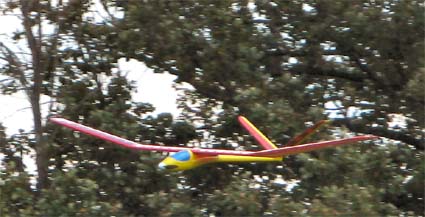
Roger Wilfong's glider on Final
No! The tress aren't that close.
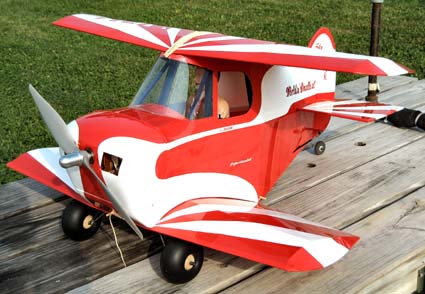
Roger Wilfong's Stits SA-2 Skybaby
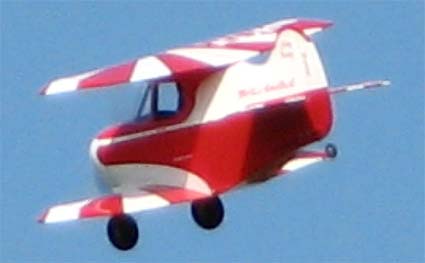
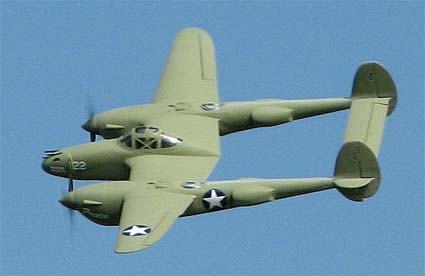
Tom Bacsanyi's Big & Beautiful P-38
There were a lot of EFO members present and flying. Jim Young flew has WACO Waco YMF-5. Jim has kits for this fine little flier available now at www.tnjmodels.rchomepage.com/tnjnewproj.php
Ken Myers gave us a bit of a thrill when he "flew" the motor out of his Flite 40. He also didn't have a good day with his Fusion. He broke the prop on a taxi back. That prop had been on the plane for a year and a half.
Richard Utkan and Jim Maughan put up one flight after another on this lovely day.
Return to "What's In This Issue"
Upcoming November EFO Meeting Info
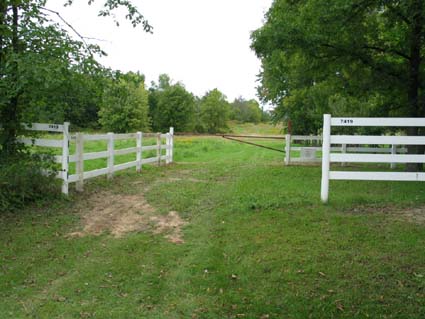
The photo above shows the NEW entrance to the Midwest 7 Mile Rd. Field. It is the gate past the second white fence on the north side of the 7 Mi. Rd. It is past another house from the one shown last month and about 1.4 miles from Currie Rd. It is directly across from Peter Waters' house. The address is posted on the fence and is 7419 Seven Mile Road. There is a second gate that you pass through about 1/2 way into the field. Just follow the most used "path." IMPORTANT! Channels 36 & 56 may NOT be used at this field!
Return to "What's In This Issue"
|




















